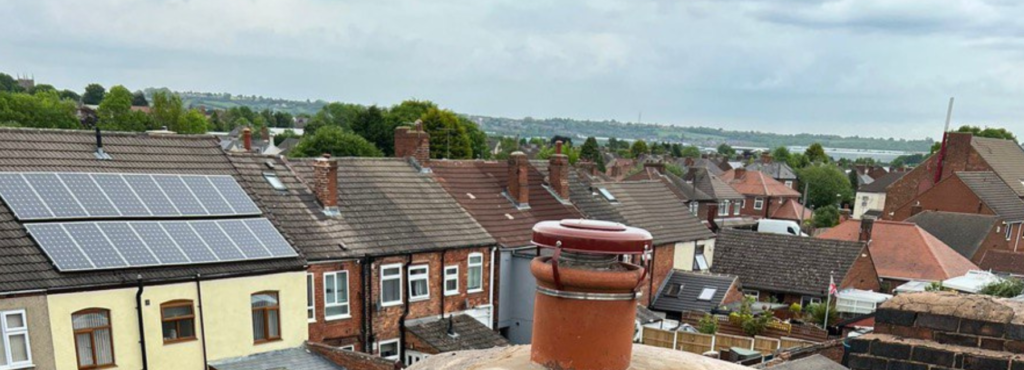Your roof is one of the most important parts of your home, providing protection from the elements and ensuring your property stays safe and dry. However, like any other part of your home, your roof is susceptible to wear and tear over time. Proper roof repairs are essential to maintaining its condition and extending its lifespan. For homeowners in Wigston, Nottinghamshire, understanding how to care for and repair your roof can save you significant costs in the long run and prevent the need for a complete roof replacement.
In this article, we will explore the best practices for extending the life of your roof through regular maintenance and proper repairs.
1. Identify and Address Small Problems Early
One of the most effective ways to extend the lifespan of your roof is by identifying and addressing small issues before they escalate into larger, more expensive problems. Roofs often show early signs of damage, such as cracked tiles, missing shingles, or small leaks, which can be easily repaired if caught early. If left unchecked, these small issues can worsen, leading to more significant structural damage and the potential for costly repairs or replacement.
Regular roof inspections by a professional can help detect these minor issues early. Homeowners should also be vigilant and look for signs of damage, such as water stains on ceilings, missing roof tiles, or visible wear and tear on the roofing material. Addressing these issues promptly will help preserve your roof and prevent further damage.
2. Maintain Proper Drainage
Proper drainage is essential for the health of your roof. When water collects on your roof due to poor drainage, it can lead to leaks, mould growth, and the deterioration of roofing materials. Gutters, downspouts, and roof valleys must be kept clear of debris to ensure water can flow freely off the roof.
Regularly cleaning your gutters and inspecting your roof’s drainage system will prevent water from pooling and causing damage. If your gutters are blocked, water may overflow and seep into the roof structure, leading to rot and weakening the roof over time. Ensuring your roof has effective drainage helps to avoid moisture-related damage and extends the life of the roof.
3. Choose the Right Materials for Repairs
When making repairs to your roof, it is essential to use high-quality materials that are compatible with your roof’s design and structure. For example, if you have a slate roof, it’s important to use the same type of slate for any repairs to maintain the integrity of the roof. Using subpar materials or mismatched components can lead to premature wear and may result in further damage down the line.
Professional roofers have the expertise to recommend and use the best materials for your specific roof type, ensuring that repairs are durable and long-lasting. Whether it’s replacing a few shingles or reattaching tiles, using high-quality materials ensures that your repairs hold up over time.
4. Regular Roof Inspections and Maintenance
Roof inspections and maintenance should be carried out regularly to ensure that your roof remains in optimal condition. Ideally, you should schedule a professional roof inspection at least once a year, particularly after extreme weather conditions like heavy rainfall, snow, or strong winds. During these inspections, a professional roofer will check for any signs of damage or wear and make necessary repairs before the issues become more severe.
Routine maintenance can also include cleaning moss or algae off the roof, checking for signs of rot, and ensuring that all roofing components, such as flashing and vents, are intact and functioning properly. By staying on top of regular maintenance, you can prevent major repairs and keep your roof in great shape for years to come.
5. Prevent Weather-Related Damage
While you cannot control the weather, there are steps you can take to minimise its impact on your roof. Extreme weather events, such as heavy rain, snow, or storms, can cause significant damage to your roof. However, by maintaining your roof in good condition and addressing issues early, you can help your roof withstand these conditions more effectively.
For example, ensuring that your roof has proper ventilation can help prevent moisture from building up during humid conditions, which could otherwise lead to mould growth and rot. Additionally, trimming nearby trees to prevent branches from rubbing against the roof or falling onto it during storms can reduce the risk of damage.
6. Proper Insulation
Proper insulation is key to the health and longevity of your roof. Insulation helps to regulate the temperature in your home, preventing excessive heat or cold from damaging the roof structure. Poor insulation can cause condensation in the attic, leading to moisture-related issues such as wood rot, mould, and mildew, which can weaken the roof over time.
Ensure that your attic is adequately insulated and ventilated to maintain a balanced temperature and prevent damage. Proper insulation also helps improve energy efficiency, reducing heating and cooling costs in your home.
Conclusion
By investing in proper roof repairs, regular maintenance, and early intervention, you can significantly extend the lifespan of your roof and prevent costly repairs or replacements in the future. Regular inspections, proper drainage, high-quality materials, and addressing weather-related damage are all essential practices that help preserve the condition of your roof.
If you’re in Wigston, Nottinghamshire, and need professional roof repairs or maintenance, contact Wigston Roofing Repairs today. Our experienced team can assess your roof, make necessary repairs, and provide advice on how to protect your roof and ensure its longevity. Don’t wait for small problems to turn into big ones—ensure the health of your roof with our expert services.
Call us on: 0116 464 7498
Click here to find out more about Wigston Roofing Repairs
Click here to complete our contact form and see how we can help with your roofing needs.

